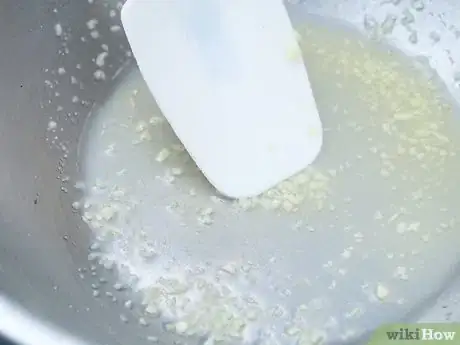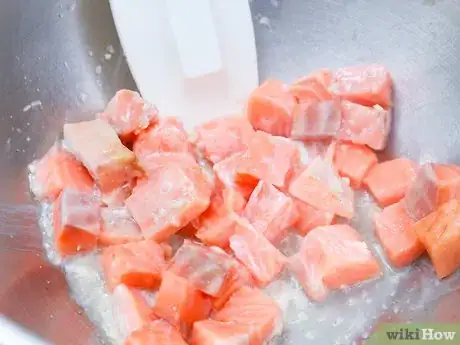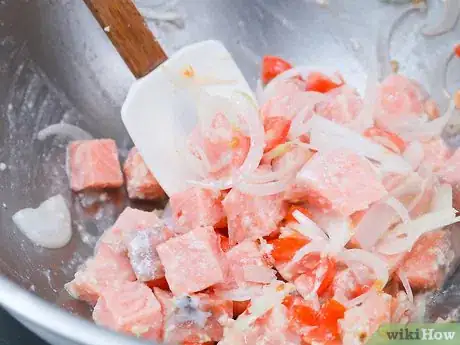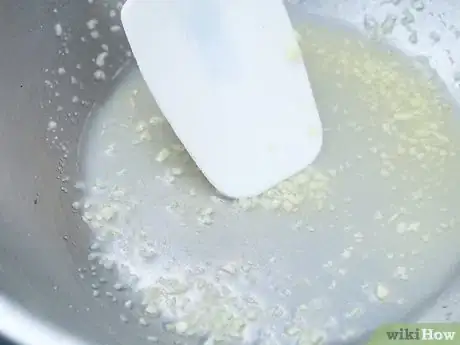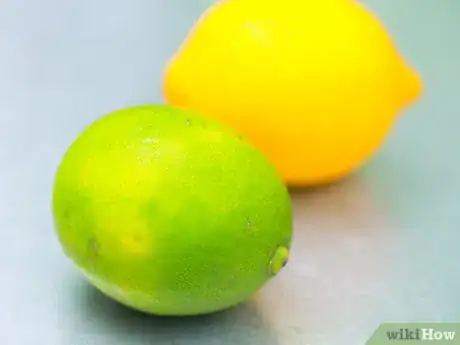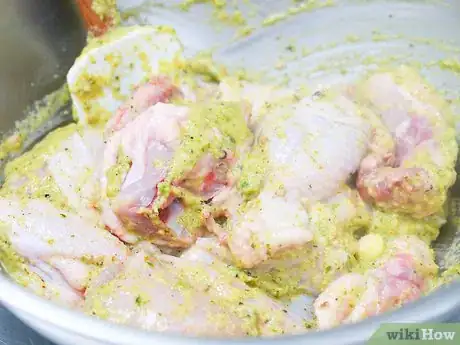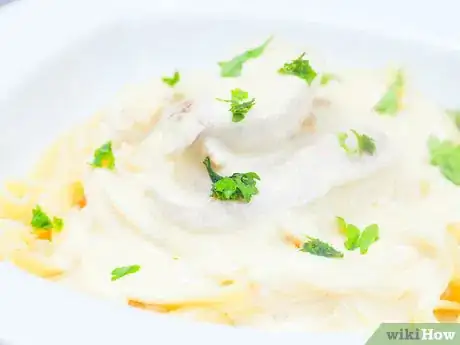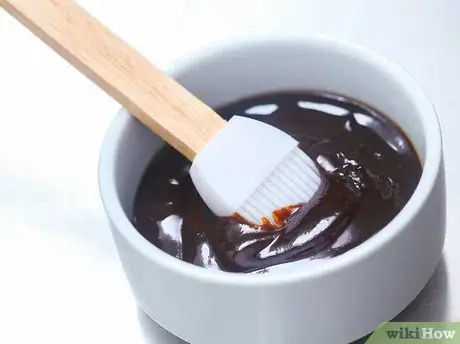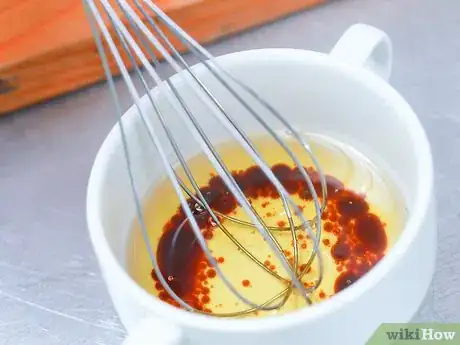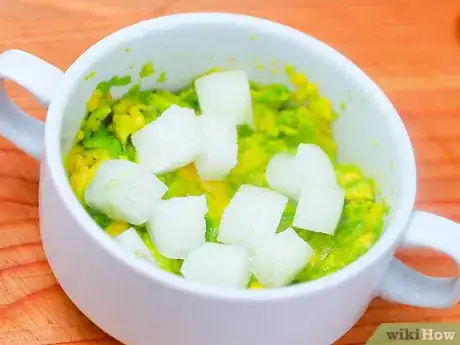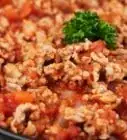X
wikiHow is a “wiki,” similar to Wikipedia, which means that many of our articles are co-written by multiple authors. To create this article, volunteer authors worked to edit and improve it over time.
This article has been viewed 104,515 times.
Learn more...
Lime juice often takes a backseat to its cousin, lemon juice, but lime juice can be just as versatile and flavorful. The acid in lime juice can actually be used to “cook” fish without heat in a dish known as ceviche or poke. You can also use lime juice in your cooking to marinade chicken, fish, and pork, and it can also be used to enhance the flavors of other dishes.
Ingredients
- 1 lb. (450 g) fish, cut into cubes
- 1 cup (250 ml) lime juice
- 1/2 tsp. (2.4 g) salt
- 1 clove minced garlic (optional)
- 3/4 cup (170 g) chopped Roma tomatoes
- 1/2 cup (113.4 g) diced red onion
- 1/2 cup (113.4 g) chopped cilantro
- 1/2 cup (113.4 g) chopped hot chili pepper (optional)
Steps
Method 1
Method 1 of 3:
Ceviche
-
1Combine lime juice, salt, and minced garlic in a glass bowl. Do not use a metal bowl, since the acidic properties of lime juice can have a chemical reaction with the metal that could taint your food.
-
2Add cubed fish to the bowl. Popular choices include salmon, ahi tuna, halibut, tilapia, and sea bass, but many types of fish and other seafood can actually be used for the dish. Make sure that the fish is completely covered by the lime juice.Advertisement
-
3Cover the bowl with plastic cling wrap and place it in the refrigerator. All the fish to sit in the lime juice mixture for at least 8 hours or until the fish turns white and opaque. Stir it occasionally as it sits to make sure that the lime juice is evenly distributed.
- The acid in the lime juice breaks the fish down in a chemical reaction that actually "cooks" the fish without the use of heat.
- Note that some fish, like ahi and salmon, will not turn white upon being cooked, even though they will become opaque. For these types of fish, you may need to poke the fish with a fork to see if it flakes.
-
4Add tomatoes, red onion, cilantro, and hot peppers to the lime mixture and fish. Stir, and allow all the ingredients to sit for another 30 minutes. Do not add these vegetables into the lime juice at the start of the process, however, since the acid in the lime juice may break them down too much and make them mushy by the time you serve the ceviche.
-
5Dish the fish and vegetables out of the lime juice with a slotted spoon. Some versions of ceviche actually include the lime juice mixture in the serving dish, however, so you could also dish it out with a standard serving spoon.
Advertisement
Method 2
Method 2 of 3:
Marinating
-
1Prepare a marinade for meat, poultry, or fish with lime juice. Every marinade is made up of an acid, an oil, and flavorings. The oil moistens the meat while spices and herbs seep in, adding pronounced flavor. The acid breaks the meat down, allowing the oil and seasonings to do their job. Vinegar and lemon juice are the most common acids used, but lime juice is also acidic enough to do the trick. Lime juice goes especially well with chicken and fish.
- The simplest marinades use equal parts oil and acid. For most marinades, you will need to prepare 1/2 cup per pound (125 milliliters per 450 grams) of meat, or 1/4 cup (60 milliliters) lime juice and 1/4 cup (60 milliliters) olive oil per pound.
-
2Use lime juice instead of lemon juice for marinades that sit over an extended amount of time. While it has enough acid to break down meat, lime juice is slightly less acidic than lemon juice, so the reaction goes a little slower. As a result, meats that bathe in lime juice can sit a little while longer without turning tough.
-
3Do not allow meats, poultry, and fish to marinate too long. The acidic lime juice can actually begin "cooking" the meat, as it does when used for ceviche. Due to the oil, however, the cooking process will not be as thorough, leaving you with raw meat that turns tough upon cooking it with heat.
- Marinate pork and beef for 2 hours to allow them ample time to soak in the marinade. Large, dense cuts can last up to 1 or 2 days before turning tough.
- Marinate chicken for about 1 hour. Chicken and other types of poultry are less dense than pork or beef, so marinades have a stronger effect. Do not allow chicken to marinate for much longer than 8 to 10 hours.
- Marinate seafood for 30 minutes. Fish has a remarkably light density and acidic lime juice will have a strong effect on it early on. Do not allow fish to marinate for more than 60 minutes, or it will begin "cooking" and will end up with a tough, unpleasant texture once you continue cooking it with heat.
Advertisement
Method 3
Method 3 of 3:
Other Culinary Uses
-
1Add a dash of lime juice to a bland recipe to give it an exotic Latin or island-style taste. Lime juice is most commonly used in cuisine from Mexico, Latin America, Hawaii, and other island countries. You can search for recipes from these regions to make use of your lime juice, or you could add a splash of lime juice in toward the end of your cooking to flavor otherwise bland dishes like soups or pastas.
-
2Pair lime juice with complementary flavors. Cilantro is an especially common herb to use with lime juice. Coconut is another worthwhile flavor to match with lime juice and brings a nice node of sweetness to the sourness of lime.
-
3Cook rice with lime juice. Rice absorbs flavor as it cooks, so adding 1 or 2 tablespoons (15 to 30 milliliters) of lime juice can give it a tangy, exotic flavor. The citrus in lime also makes rice fluffier, but the effect is not as pronounced as it is when using a stronger citrus like lemon juice.
- Alternatively, you can also create coconut lime rice by substituting half or all of the water for coconut milk and adding 1 to 2 tablespoons (15 to 30 milliliters) of lime juice. This rice will be heavy rather than fluffy due to the effect of the coconut milk.
-
4Make a key lime dessert. Key limes are smaller than other lime varieties and have a sharper, more pronounced sourness that creates an interesting contrast in otherwise sweet desserts. Key lime pie is the most common lime baked good, but you can also create cakes, cheesecakes, ice cream, and more using the juice of key limes.
-
5Flavor a beverage with lime juice. While not as commonly used as lemon juice, lime juice can add a refreshing splash of citrus to a variety of drinks. One or two teaspoons of lime juice works especially well in water, but you can also try adding a splash to a lemon-lime drink or other soda. Alternatively, you can use lime juice to create limeade.
-
6Add lime juice to your favorite sauce. Lime juice can give an old sauce recipe new dimension. Try adding 1 or 2 teaspoons (5 to 10 milliliters) of lime juice to a standard barbecue or marinara sauce. Stir the lime juice in and warm the sauce so that the flavors can blend.
-
7Create a lime juice dressing. A simple vinaigrette dressing combines olive oil and vinegar in a ratio of 3 to 1. For an exotic twist, you can skip the vinegar and add lime juice in the same proportions. Mix in a little honey to cut the sourness of the lime juice, or add some cilantro, ginger, and salt to enhance the flavor. You can use this dressing over cold cooked pasta, loose leaf salads, and cucumber salads.
-
8Make a guacamole dip. Authentic guacamole tends to use lime juice, since the flavor of the avocado pulp is enhanced by the tanginess of lime. Other ingredients, like cilantro, salt, and garlic, are added in and blended together to create a slightly chunky dip.
Advertisement
Community Q&A
-
QuestionDoes curing fish with lime juice make it tough?Only if you leave it for too long. I wouldn’t let citrus-cured seafood sit in the fridge for longer than 24 hours. After that, it could turn the fish tough.
Advertisement
Warnings
- Only marinate foods in a glass or plastic container. The acid will react with metal, releasing harmful chemicals into your food and leaving behind a bad taste.⧼thumbs_response⧽
- Keep your food in the refrigerator as it marinates. Allowing meat to sit out on the counter at room temperature will make it easier for bacteria to multiply, improving your odds of getting some type of food poisoning.⧼thumbs_response⧽
Advertisement
References
About This Article
Advertisement
